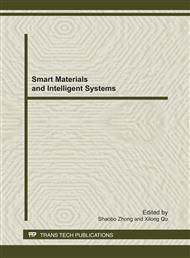p.300
p.305
p.309
p.315
p.321
p.326
p.331
p.336
p.341
Dynamic Voltage and Frequency Scaling Under an Accurate System Energy Model
Abstract:
Dynamic voltage and frequency scaling (DVFS) is a technique used in modern portable devices operated by battery to set voltage and frequency levels that meet performance requirements while minimizing energy consumption. Most of the present work on DVFS policies are based on simplistic assumptions about the hardware characteristics. In this paper, we discuss the DVFS problem under an accurate system energy model which comes from a application system portable media player (PMP) with a DVFS-capable processor PXA255. We present an optimal DVFS algorithm based on all frequency combinations at the cost of large computation. And a simplified algorithm based on two frequency combinations consumes a little more energy than the former with less computations. The experiment results show that the proposed two algorithms reduce the energy consumption effectively.
Info:
Periodical:
Pages:
321-325
Citation:
Online since:
January 2012
Authors:
Price:
Сopyright:
© 2012 Trans Tech Publications Ltd. All Rights Reserved
Share:
Citation:


